Lee Cloudiness - Key Parameters
by ZAMG
|
04 July 2007/06.00 UTC - Meteosat 8 IR10.8 image; red: wind vectors 500 hPa
|
|
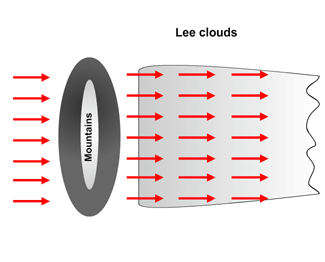
|
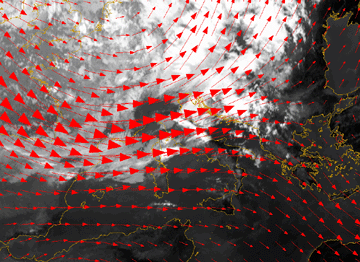
|
|
13 November 2006/00.00 UTC - Meteosat 8 IR10.8 image; red: wind vectors 500 hPa
|
|
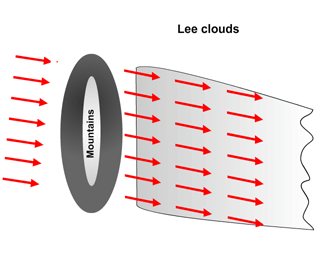
|
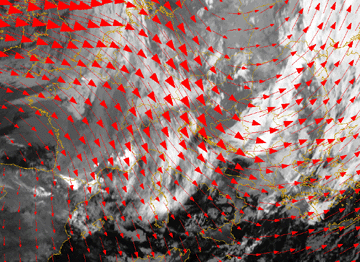
|
28 June 2005/04.45 UTC - Meteosat 8 HRVIS image, red: wind vectors 500 hPa
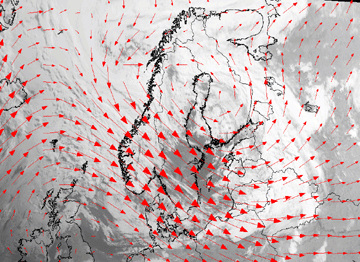
Jet axis and thickness
High Lee Cloudiness often occurs along the right (anticyclonic) side of a jet stream, and sometimes in the jet exit region. Often it can be observed in baroclinic zones on the leading side of the synoptic-scale thickness ridge.|
13 November 2006/00.00 UTC - Meteosat 8 IR10.8 image; yellow: isotachs 300 hPa, black: zero line of shear vorticity 300 hPa
|
|
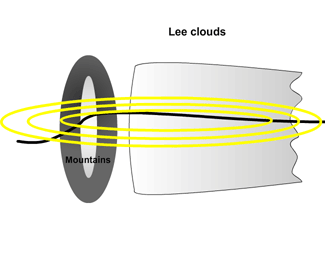
|
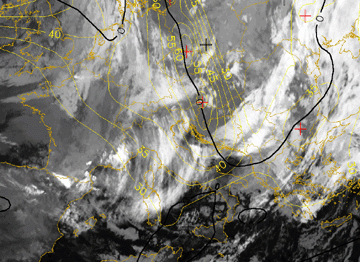
|
Stability (Showalter index)
The Showalter index ranges from 3 to 12 which indicate a stable atmosphere.Looking more closely at stability (Showalter index is only the mean value of a layer) radio sondes mostly show a stable layer on top of a conditionally unstable layer. Above there is again a conditionally unstable layer. (see Meteorological physical background ).


